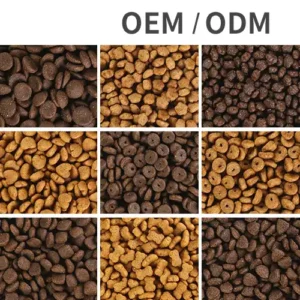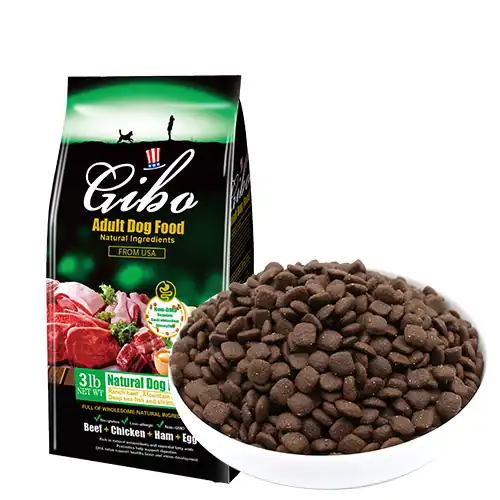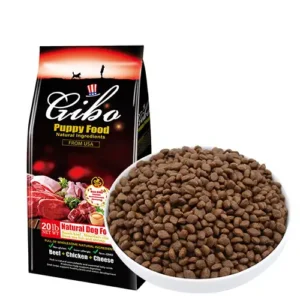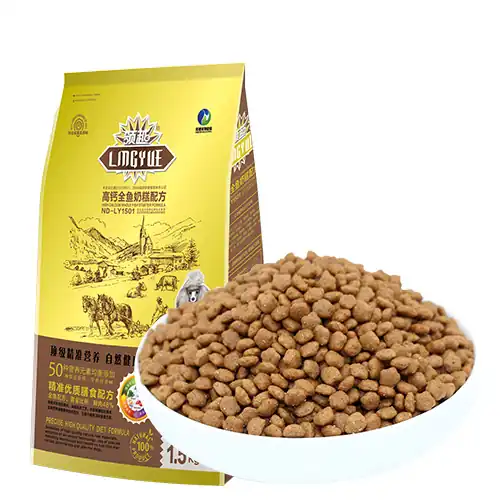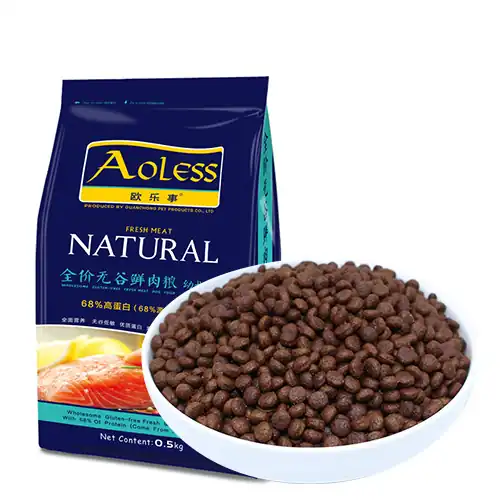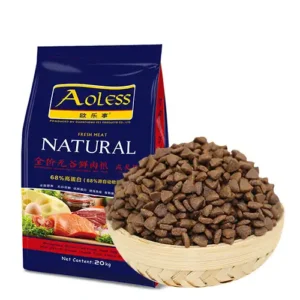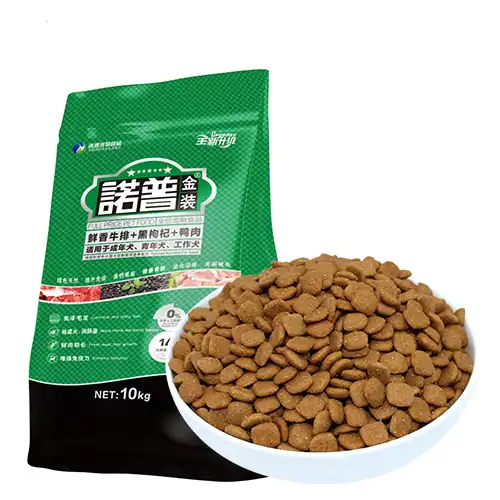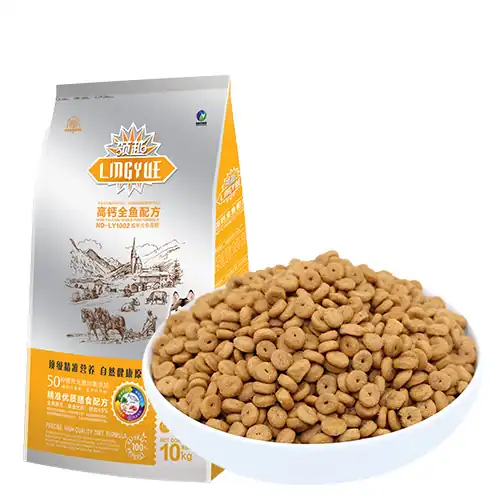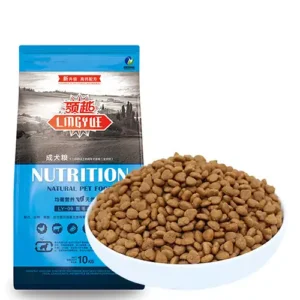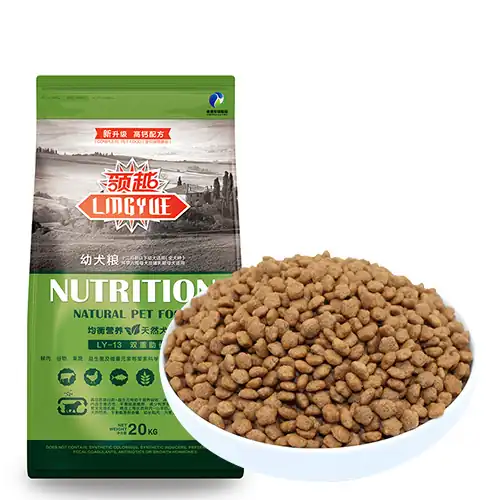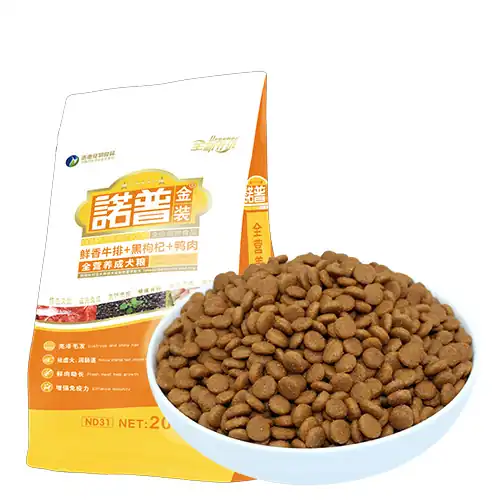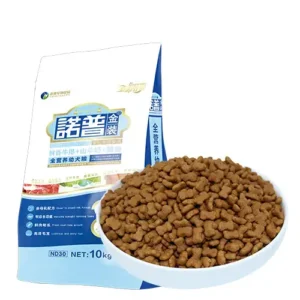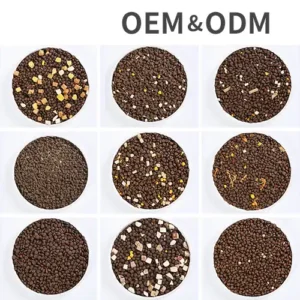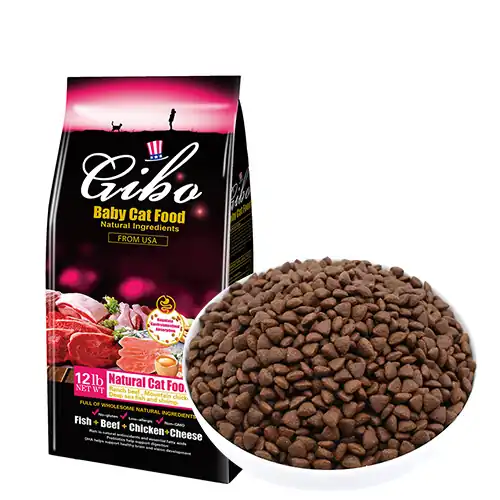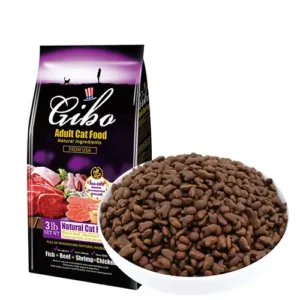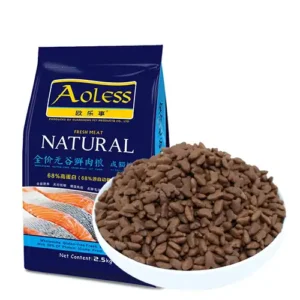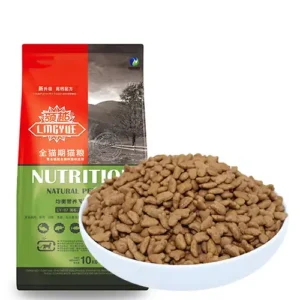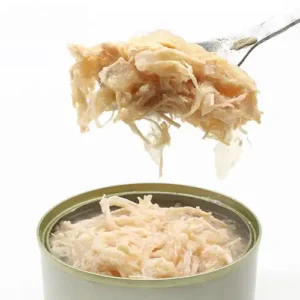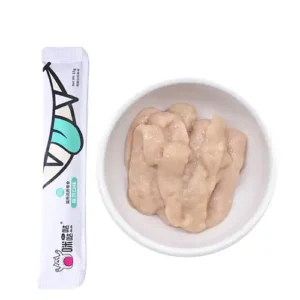Pet Food Products
Pet food is specialized for pets (cats, dogs, small animals, etc.) to provide food, between human food and traditional livestock and poultry feed between the high-grade animal food. Its role is mainly for a variety of pets to provide the most basic life assurance, growth and development and health of the nutrients required. It has the advantages of comprehensive nutrition, high digestive absorption rate, scientific formula, quality standard, easy to feed and use, and can prevent certain diseases.
Discover Our Pet Food
We offer a range types of pet food including: Pet diets, dietary companions, functional foods, breed-specific foods, pet health foods, prescription foods, pet snacks, and more.
Dog Food Series
Pet dog care knowledge
Take good care of your pet dog
01
Three stages of puppy growth
Nursing period (2 – 28 days)
From the date of birth of the puppy, the termination date depends on the mother dog. Starting at week 3 the mother dog’s milk may not be sufficient for the puppy’s needs. Solid food can be introduced slowly from about cycle 3 as the first step in weaning.
Weaning Period (3-8 weeks)
In reality, the weaning time depends on the size of the litter, the availability of the mother’s milk and the breeder’s preference. Puppies should be weaned gradually, but the average time for weaning is 6 weeks, with complete weaning at 7 weeks. Once the puppies are a little older, they begin to open their eyes, walk around, and explore their environment. Starting at 2-3 weeks, they explore and try new things, and the puppies begin to be interested in their mother’s solid food. In practice, weaning time depends on the size of the litter, the availability of mother’s milk and the preference of the breeder. Weaning should be gradual.
Growing Period
It is important to note that size has a significant effect on the estimated life span of a dog, as well as the age at which the different life stages begin. Small dogs reach adulthood at 12 months. Large dogs reach adulthood at about 18 months, while giant dogs may take up to 24 months to reach adulthood. Humans take about 18 years to reach adulthood. A puppy grows 12 times faster than a human baby.
02
Medium-sized dogs 1-7 years old <15kg
Building a Fit Body
Most small dogs live in cities, and owners often assume that they need very little activity; many small dogs exercise less and consume less energy. So they may have a sedentary lifestyle. Be sure to maintain adequate daily exercise and take regular weight measurements.
Reduce Plaque Freshen Breath
Small dogs are more prone to oral health problems than larger breeds because they have larger teeth arranged more compactly and live longer. Oral disease leads to loss of appetite and depression in dogs, and regular dental checkups are essential.
Smooth coat and reduce dander
Maintain kennel hygiene by combing the coat and bathing regularly. Special attention should be paid to the fact that poor skin and coat condition can also be a good indicator of various other illnesses such as diabetes, hormonal problems, etc. that require special attention.
03
Older dogs >7 years old
Improves Digestion Easily Absorbed
Older dogs are more prone to constipation because ageing makes them less active, which dulls the digestive system. So make sure you drink plenty of water and get proper exercise daily.
Moisturizes the coat Maintains color
As dogs age, the quality of their skin and coat deteriorates. Skin and coat deterioration is manifested by increased dandruff (scalp), loss of coat luster/shine, and a dehydrated appearance. Focusing on kennel hygiene, regular grooming of your dog’s coat, and improving circulation are all good ways to do this.
Easy chewing reduces tartar
80% of dogs over 3 years old have dental problems. Foul breath odor is a potential symptom of periodontal disease and can be easily detected by the owner (as an owner you need to check your dog’s teeth more often, smell for bad breath, and visit a professional veterinarian if you need to).
Cat Food Series
Cat Feeding Knowledge/The Life of a Cat
The average age of a cat is 13-15 years old, and it will go through three main stages in its life: juvenile, adult and old age;
The cat’s early years are the most important period of growth and development, but also related to the formation of character and habits, the owner, in addition to patient care and companionship, but also to give the cat to eat cat food for kittens;
Cats that have reached the age of 1 have become adults, and at this time, switching to cat cat food can meet most of the cat’s nutritional needs;
Cats over 8 years old are recommended to switch to older cat cat food for more careful care;
Cats at different growth stages are recommended to be fed cat food suitable for their age so that they can be given better care and allowed to accompany us for a longer period of time.
Newborn Period
Kittens are mainly sleeping during this period and need to be fed;
Ears open at about 7 days;
Eyes open at about 10 days and milk teeth grow;
In the first 14 days, kittens have poor vision and hearing, and they mainly rely on taste, touch and their sense of temperature to judge their surroundings.
Transition Period
Transition from newborn to early adult;
By week 3 kittens begin to be interested in semi-solid food, but will continue to eat mother’s milk.
Age of Socialization
The most influential period in a kitten’s life, it will develop social skills and begin to explore the environment, engage in play behaviors, and be curious and exposed to new things;
In the 3rd-4th weeks, vision development is complete, and the line of sight will follow objects or the mother cat’s movement;
In the 4th week, the first deworming should be done, otherwise it will be easily infected by internal parasites (please consult your veterinarian for the relevant deworming program);
Age of Socialization
Starting from the 7th week, the kitten can be completely weaned, and should be fed 5-6 meals a day, and only slowly reduced to 2 times a day at 6 months. At this time, kittens need the special care of professional cat food to provide abundant energy, ensure healthy bone development and improve body resistance;
In the 7th-9th weeks, the kittens will leave the mother cat and come to the new home. Before picking up the kittens, you should confirm that the kittens have received detailed information on preventive injections and deworming. It is best to consult with the veterinarian first for information on preventive injections and de-sexing.
Adolescent Period
Many major changes occur during this period, kittens are still developing and are not yet fully grown and should continue to be fed kitten specialty cat food;
From the 15th week, the permanent teeth start to grow out;
Around 5 months, some cats reach sexual maturity, but their bodies are still developing, so female kittens are not recommended to mate and breed before less than 12 months;
5-12 months, the best time for young cats to be sterilized.
Adult cats (1 year +)
Cats that have reached the age of 1 year are now adults, and at this point it is important to switch to cat food so that they can have excellent vigor, shiny coats, and healthy eyesight for excellent daily performance.
Adult cats (8 years old +)
Cats over the age of 8 have entered old age, and it is important to switch to food that is suitable for “older cats” in order to help them maintain strong bones, abundant energy and promote digestive health; the average life expectancy of cats is 13-15 years, so if we take good care of them, they will be with us for a longer period of time.
Other Pet Food Types
Get a quote from us
Let’s Chat Together
Connect with us by anyway you prefer: Email, WhatsApp, Telegram, Facebook Messenger and others.

